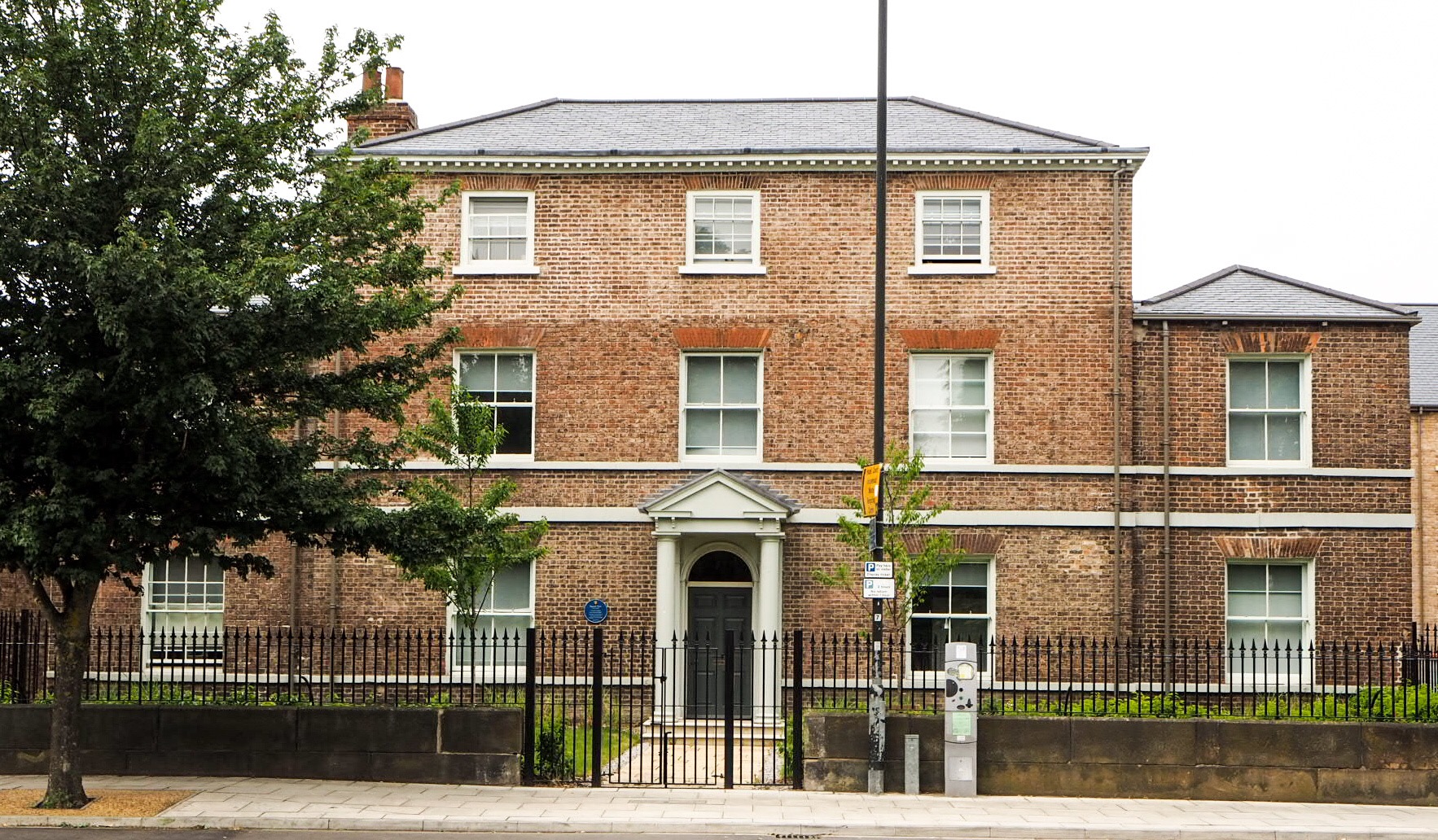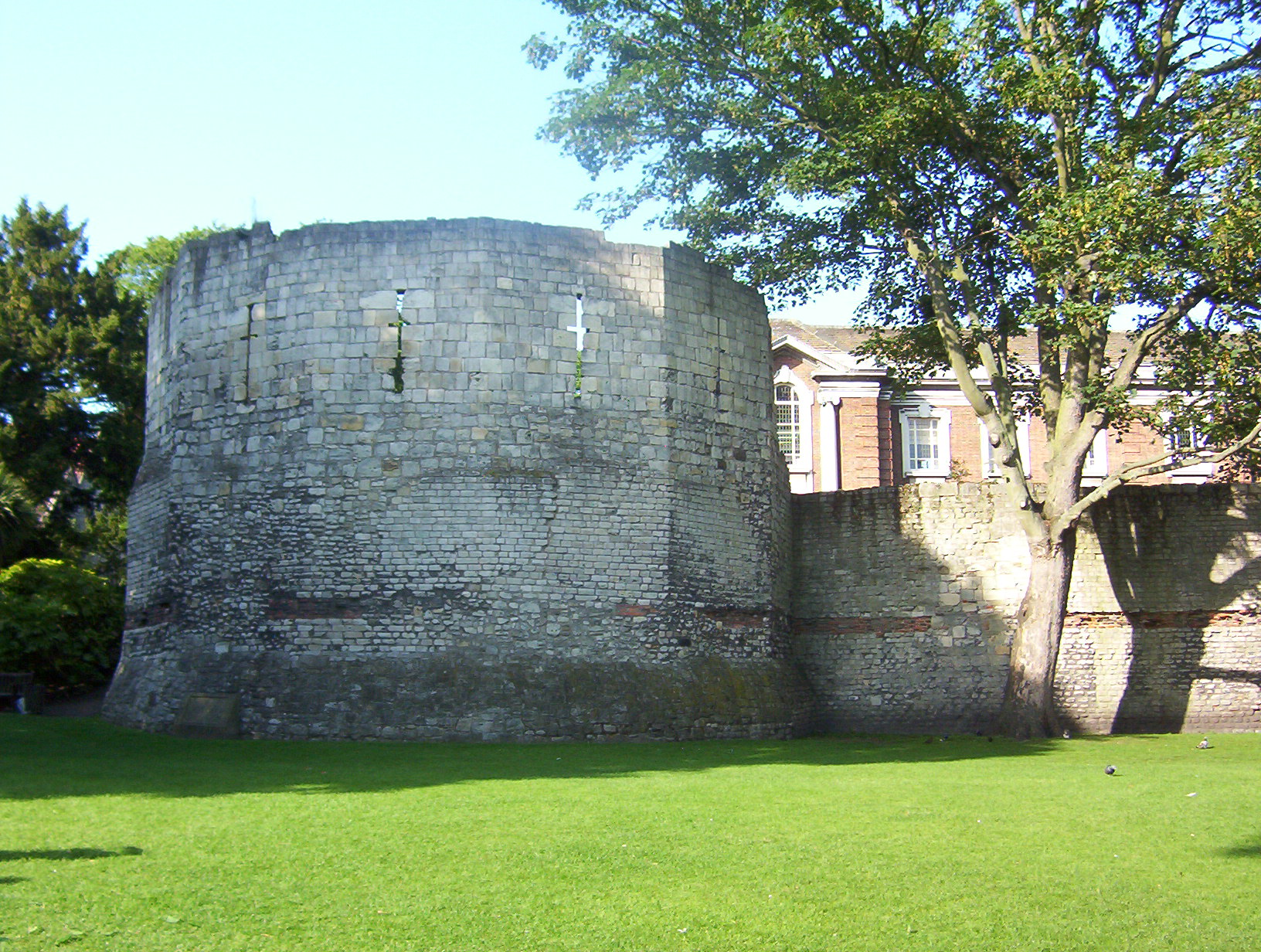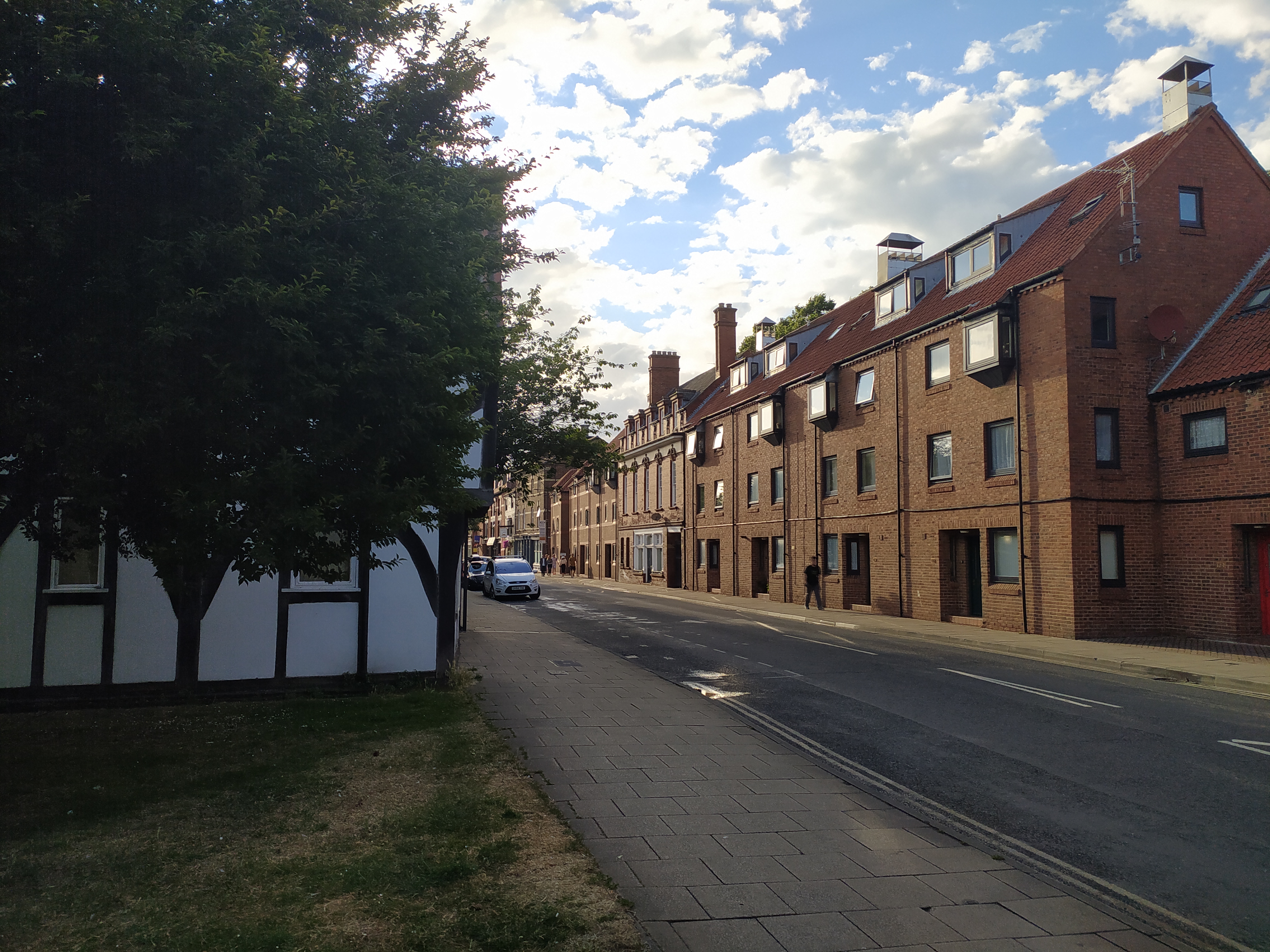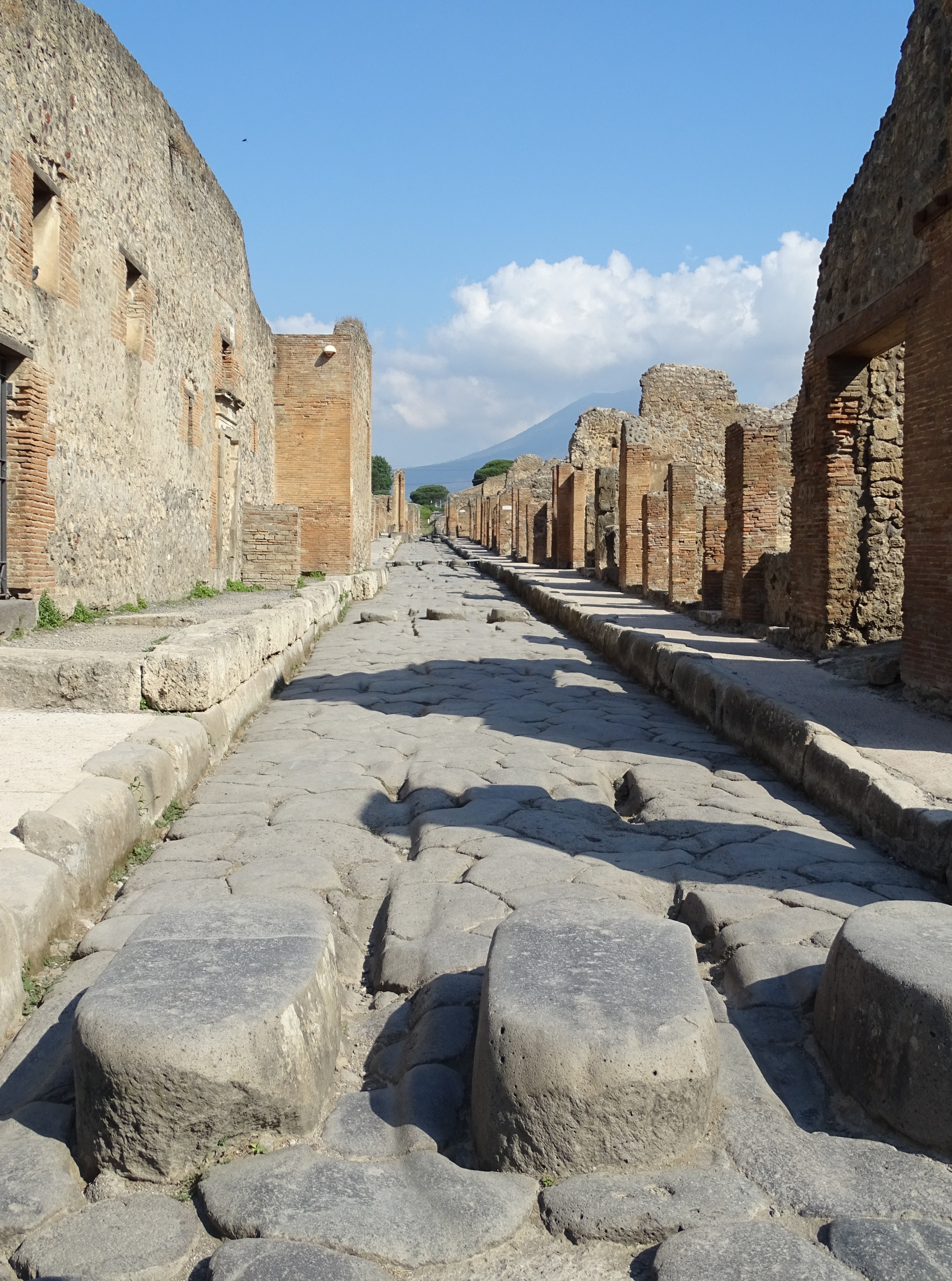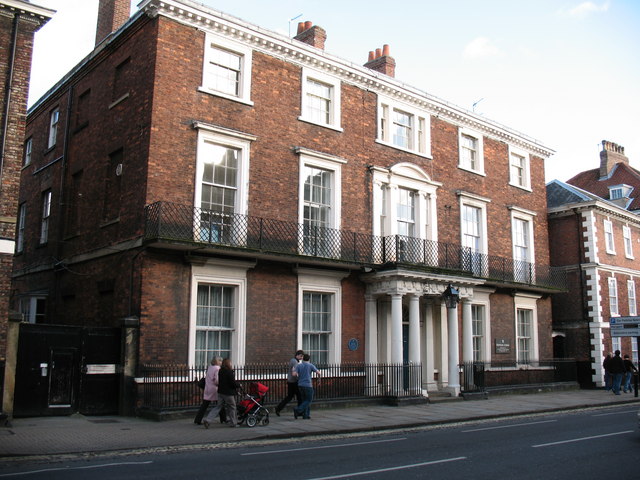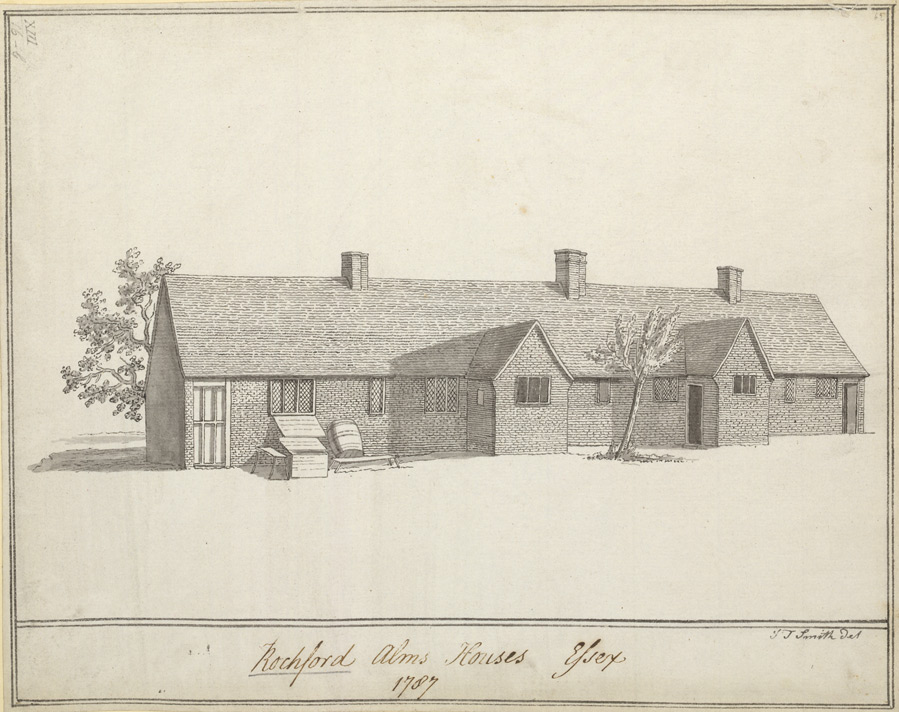|
Lawrence Street (York)
Lawrence Street is a road in York, in England, immediately south-east of the city centre. History A Bronze Age cremation urn has been found in excavations by Lawrence Street, the only prehistoric remains found in central York. The street was originally constructed as a Roman road, but there is no evidence of Roman occupation in the area, only pottery shards and possible signs of a clay quarry, the area otherwise being used as farmland. There was some Anglo-Saxon building along the street, extending out from Walmgate. The Normans built an earthwork across the line of the street, and in the 12th century Walmgate Bar was constructed in it. In the 14th-century, the York city walls were extended over the earthwork, with Lawrence Street remaining entirely outside. St Edward the Martyr Church was built immediately outside Walmgate Bar, and St Lawrence's Church also existed by the 12th century. In 1142, St Nicholas's Hospital was built on the street, with its chapel used as a furth ... [...More Info...] [...Related Items...] OR: [Wikipedia] [Google] [Baidu] |
York
York is a cathedral city with Roman Britain, Roman origins, sited at the confluence of the rivers River Ouse, Yorkshire, Ouse and River Foss, Foss in North Yorkshire, England. It is the historic county town of Yorkshire. The city has many historic buildings and other structures, such as a York Minster, minster, York Castle, castle, and York city walls, city walls. It is the largest settlement and the administrative centre of the wider City of York district. The city was founded under the name of Eboracum in 71 AD. It then became the capital of the Roman province of Britannia Inferior, and later of the kingdoms of Deira, Northumbria, and Jórvík, Scandinavian York. In the Middle Ages, it became the Province of York, northern England ecclesiastical province's centre, and grew as a wool-trading centre. In the 19th century, it became a major railway network hub and confectionery manufacturing centre. During the Second World War, part of the Baedeker Blitz bombed the city; it ... [...More Info...] [...Related Items...] OR: [Wikipedia] [Google] [Baidu] |
Walmgate
Walmgate is a street in the city centre of York, in England. During the Medieval period, the street was the site of a seafissh and cattle market. Walmgate Bar, was involved in the Siege of York in 1644, during the First English Civil War. During the 20th century, many of the older buildings were cleared away and newer structures put up. History The street lay outside Roman Eboracum, and although it was crossed by a Roman road, evidence of occupation in the period is limited to two wharfs on the River Foss, and some burials. The road appears to have developed in the Viking Jorvik period, during which it mostly hosted industrial and commercial uses. The street was first mentioned in about 1080, as "Walbegate", suggesting it may be named after an individual called "Walba". Walmgate Bar, the gate at the south-east end of the street, was built before 1155, but the section of the York city walls enclosing the street was built later: permission to construct this section of the wal ... [...More Info...] [...Related Items...] OR: [Wikipedia] [Google] [Baidu] |
Roman Road
Roman roads ( la, viae Romanae ; singular: ; meaning "Roman way") were physical infrastructure vital to the maintenance and development of the Roman state, and were built from about 300 BC through the expansion and consolidation of the Roman Republic and the Roman Empire. They provided efficient means for the overland movement of armies, officials, civilians, inland carriage of official communications, and trade goods. Roman roads were of several kinds, ranging from small local roads to broad, long-distance highways built to connect cities, major towns and military bases. These major roads were often stone-paved and metaled, cambered for drainage, and were flanked by footpaths, bridleways and drainage ditches. They were laid along accurately surveyed courses, and some were cut through hills, or conducted over rivers and ravines on bridgework. Sections could be supported over marshy ground on rafted or piled foundations.Corbishley, Mike: "The Roman World", page 50. Warwick Pr ... [...More Info...] [...Related Items...] OR: [Wikipedia] [Google] [Baidu] |
Walmgate Bar
York has, since Roman times, been defended by walls of one form or another. To this day, substantial portions of the walls remain, and York has more miles of intact wall than any other city in England. They are known variously as York City Walls, the Bar Walls and the Roman walls (though this last is a misnomer as very little of the extant stonework is of Roman origin, and the course of the wall has been substantially altered since Roman times). The walls are generally 13 feet (4m) high and 6 feet (1.8m) wide. History Roman walls The original walls were built around 71 AD, when the Romans erected a fort ( castra) occupying about 50 acres or 21.5 hectares near the banks of the River Ouse. The rectangle of walls was built as part of the fort's defences. The foundations and the line of about half of these Roman walls form part of the existing walls, as follows: *a section (the west corner, including the Multangular Tower) in the Museum Gardens *the north-west and north-e ... [...More Info...] [...Related Items...] OR: [Wikipedia] [Google] [Baidu] |
York City Walls
York has, since Roman times, been defended by walls of one form or another. To this day, substantial portions of the walls remain, and York has more miles of intact wall than any other city in England. They are known variously as York City Walls, the Bar Walls and the Roman walls (though this last is a misnomer as very little of the extant stonework is of Roman origin, and the course of the wall has been substantially altered since Roman times). The walls are generally 13 feet (4m) high and 6 feet (1.8m) wide. History Roman walls The original walls were built around 71 AD, when the Romans erected a fort ( castra) occupying about 50 acres or 21.5 hectares near the banks of the River Ouse. The rectangle of walls was built as part of the fort's defences. The foundations and the line of about half of these Roman walls form part of the existing walls, as follows: *a section (the west corner, including the Multangular Tower) in the Museum Gardens *the north-west and nort ... [...More Info...] [...Related Items...] OR: [Wikipedia] [Google] [Baidu] |
St Lawrence's Church, York
St Lawrence Parish Church is an active Anglican church in York, England. It is situated in Lawrence Street, just outside Walmgate Bar. History It is dedicated to St Lawrence, possibly in deliberate reference to the Basilica of Saint Lawrence outside the Walls, in Rome. The tower of the old church building remains in the churchyard – the doorway and lower half date to the 12th-century. This tower is now cared for by the Churches Conservation Trust. The oldest gravestones in the churchyard lie on the site of the demolished nave and chancel, and include tombs of the Heskeths and Yarburghs of Heslington Hall. The parish was united with that of St Nicholas after that church was destroyed in the Siege of York. St Lawrence was also severely damaged, but was rebuilt at the Restoration, and silver and furniture from c.1669 remain. Sir John Vanbrugh married Henrietta Maria Yarburgh here on a snowy day in 1719. The churchyard contains the 1830 Rigg Memorial – built by public s ... [...More Info...] [...Related Items...] OR: [Wikipedia] [Google] [Baidu] |
Siege Of York
The siege of York in 1644 was a prolonged contest for York during the First English Civil War, between the Scottish Covenanter army and the Parliamentarian armies of the Northern Association and Eastern Association, and the Royalist Army under the Marquess of Newcastle. It lasted from 22 April until 1 July when the city was relieved by Prince Rupert of the Rhine. Rupert and Newcastle were defeated the next day at the decisive Battle of Marston Moor, and the siege resumed until the city was surrendered on easy terms on 16 July. Campaign Early years of the Civil War During the 17th century, York was often referred to as the "capital of the north" and sometimes as the "second city in England" (although Bristol had a larger population). It had great prestige as the seat of the Archbishop of York, and as the centre of much of the region's trade. When civil war broke out in 1642, the Royalists in Yorkshire were briefly besieged in the city, until the Earl of Newcastle ... [...More Info...] [...Related Items...] OR: [Wikipedia] [Google] [Baidu] |
Bootham School
Bootham School is an independent Quaker boarding school, on Bootham in the city of York in England. It accepts boys and girls ages 3–19, and had an enrolment of 605 pupils in 2016. It is one of seven Quaker schools in England. The school was founded by the Religious Society of Friends (Quakers) and opened on 6 January 1823 in Lawrence Street, York. Its first headmaster was William Simpson (1823–1828). He was followed by John Ford (1828-c.1865). The school is now on Bootham, near York Minster, in a building originally built in 1804 for Sir Richard Vanden Bempde Johnstone. The school's motto ''Membra Sumus Corporis Magni'' means "We are members of a greater body", quoting Seneca the Younger (Epistle 95, 52). Academics Bootham was ranked at 43rd in the 2011 Independent Schools A-Levels League Tables. Notable alumni Notable former pupils include the 19th-century parliamentary leader John Bright, the mathematician Lewis Fry Richardson ("father of fractals"), the ... [...More Info...] [...Related Items...] OR: [Wikipedia] [Google] [Baidu] |
Kingston Upon Hull
Kingston upon Hull, usually abbreviated to Hull, is a port city and unitary authorities of England, unitary authority in the East Riding of Yorkshire, England. It lies upon the River Hull at its confluence with the Humber Estuary, inland from the North Sea and south-east of York, the historic county town. With a population of (), it is the fourth-largest city in the Yorkshire and the Humber region after Leeds, Sheffield and Bradford. The town of Wyke on Hull was founded late in the 12th century by the monks of Meaux Abbey as a port from which to export their wool. Renamed ''Kings-town upon Hull'' in 1299, Hull had been a market town, military supply port, trading centre, fishing and whaling centre and industrial metropolis. Hull was an early theatre of battle in the First English Civil War, English Civil Wars. Its 18th-century Member of Parliament, William Wilberforce, took a prominent part in the abolition of the slave trade in Britain. More than 95% of the city was ... [...More Info...] [...Related Items...] OR: [Wikipedia] [Google] [Baidu] |
City Of York Council
City of York Council is the municipal governing body of the City of York, a unitary authority in Yorkshire, England. It is composed of 47 councillors, one, two, or three for each of the 21 electoral wards of York. It is responsible for all local government services in the City of York, except for services provided by York's town and parish councils. History Municipal borough The ancient liberty of the City of York was replaced in 1836 by a municipal borough, with city status, as a result of the Municipal Corporations Act 1835. As a municipal borough, the York Corporation was responsible for all local government services in the City of York. The municipal borough was expanded to serve the following areas: County borough The municipal borough was replaced in 1884 by a county borough, with city status, as a result of the Municipal Corporations Act 1882. As a county borough, the York Corporation was responsible for all local government services in the City of York. When county ... [...More Info...] [...Related Items...] OR: [Wikipedia] [Google] [Baidu] |
Tuke House, Lawrence Street, York
Tuke may refer to: People * Tuke family, a Quaker family from York, England ** Blair Tuke (born 1989), New Zealand Olympic sailor ** Daniel Hack Tuke (1827–1895), a prominent campaigner for humane treatment of the insane ** Henry Tuke (1755–1814) ** Henry Scott Tuke (1858–1929), British painter and photographer ** James Hack Tuke (1819–1896) ** Margaret Tuke (1862–1947), Principal of Bedford College, London University ** Samuel Tuke (reformer) (1784–1857) ** William Tuke III (1732–1822), founder of The Retreat at York ** William Murray Tuke (1822–1903), tea merchant and banker, son of Samuel Tuke, father of W. F. Tuke * Anthony Tuke (1920–2001), chairman of Barclays Bank and Rio Tinto Zinc, son of A. W. Tuke, grandson of W. F. Tuke * Anthony Tuke (1897–1975), chairman of Barclays Bank, son of W. F. Tuke, father of Sir A. F. Tuke * Benjamin Tuke (1870–1936), Ireland international rugby player * Bob Tuke (born 1947), American politician * Brian Tuke (died 1545) ... [...More Info...] [...Related Items...] OR: [Wikipedia] [Google] [Baidu] |
Almshouses
An almshouse (also known as a bede-house, poorhouse, or hospital) was charitable housing provided to people in a particular community, especially during the medieval era. They were often targeted at the poor of a locality, at those from certain forms of previous employment, or their widows, and at elderly people who could no longer pay rent, and are generally maintained by a charity or the trustees of a bequest (alms are, in the Christian tradition, money or services donated to support the poor and indigent). Almshouses were originally formed as extensions of the church system and were later adapted by local officials and authorities. History Many almshouses are European Christian institutions though some are secular. Almshouses provide subsidised accommodation, often integrated with social care resources such as wardens. England Almshouses were established from the 10th century in Britain, to provide a place of residence for poor, old and distressed people. They were someti ... [...More Info...] [...Related Items...] OR: [Wikipedia] [Google] [Baidu] |
